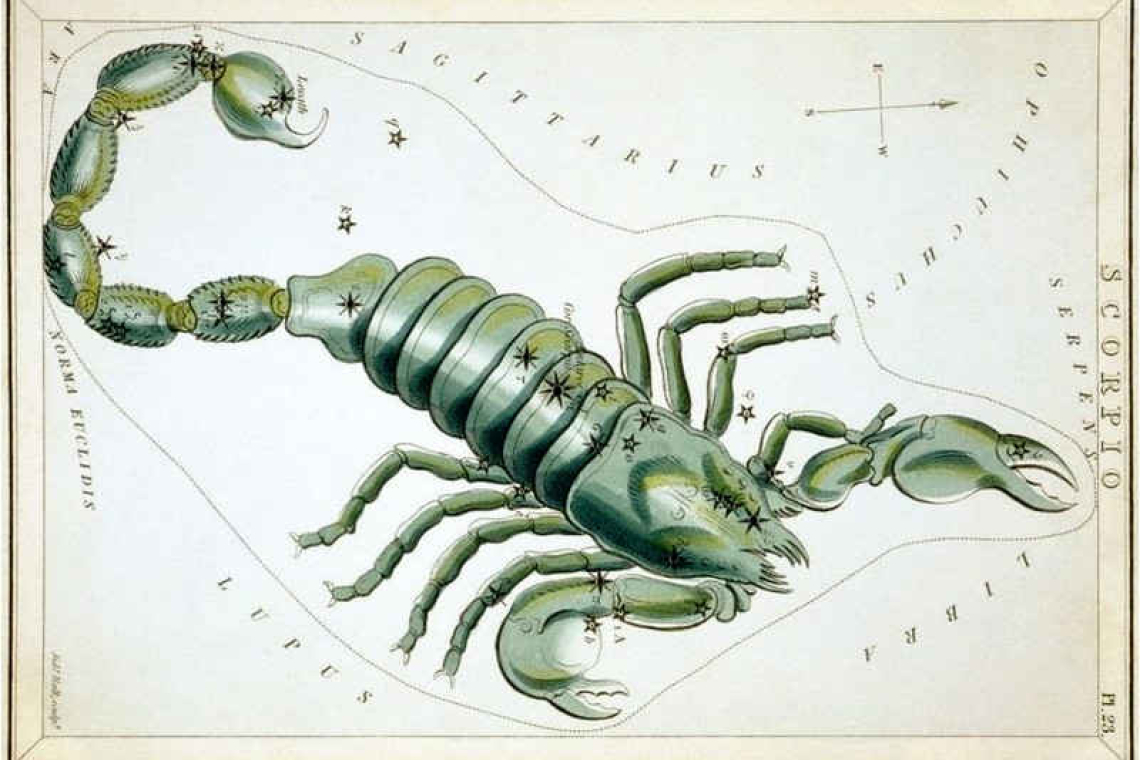~ St. Maarten’s Backyard Astronomy for July 28 - 30 ~
Sun rises at 5:49am
Sun sets at 6:47pm
Lunar phase: 2nd quarter, waxing gibbous
Moon sets at 2:09am
Moon rises at 4:03pm
As July reaches its final nights, keep an eye out for lingering Delta Aquariid Meteorites, their time range extends into August where it will eventually overlap with the Perseid Meteor Shower. We will look into these two celestial events more in weeks to come, but for this weekend, let’s turn our attention to a constellation known to western civilization since antiquity: Scorpius.
Scorpius is one of the 12 zodiac constellations, lying along the plane of the ecliptic. That means the sun and the moon spend time in front of the constellation at various seasons of the year, hence the phrase “the sun is in the house of such and such constellation”.
Find Scorpius in our southern sky after sunset. Look for a large J-shaped curve of stars. This Saturday night you’ll find the moon just left of Scorpius. By Sunday night, the moon will be a bit farther left of Scorpius, but still close enough to help you identify the constellation among the starry sky field.
Can you see its stars that form the shape of the scorpion’s tail? There is even a “stinger” at the tip: Two stars – Shaula and Lesath. This pair is noticeable for its nearness to each other. Look also for the “heart of the scorpion” – the brilliant red star Antares. The name Antares actually means Anti-Mars! Mars, also bathed in red light, is perhaps easily confused with this star, thus the need to be clear: Antares is not Mars.
Interestingly, Scorpius is linked in Greek mythology to one of our favorite constellations: Orion the Hunter. It is said that Orion was overly proud of his hunting prowess, and claimed no animal on Earth could survive his lethal skills. That boast angered the Earth goddess Gaia, so she sent the Scorpion to humble the mighty hunter. Scorpius stung Orion and killed him. Don’t mess with Mother Nature! The legend ends with Zeus, the king of the gods, placing Orion and Scorpius in the heavens in such a way that the two enemies would never meet. As you study the stars, perhaps you realize that, indeed, these two enemies are never in the sky together.
Elsewhere in the world, the curved tail of Scorpius is seen as a different idea altogether. In the Polynesian culture, it is the magic fishhook of the demigod, Maui. The story goes that Maui went fishing with his brothers in their outrigger canoe and he caught a huge object and asked his brothers to paddle harder while he pulled the line. As Maui hauled, many rocks appeared. The more he pulled, the more rocks appeared. Finally, he pulled hard enough that the large chunks of land surfaced from the ocean. These became the islands that are home to the seagoing people.
Enjoy the stars, the moon, and the occasional meteor streak, and remember the cultural stories that bring it all to life in our human imagination!
Thank you for keeping up with the Night Sky articles, backyard astronomy designed for St. Maarten sky viewing. FYI: If you are out later on in the week, note that each star rises about four minutes earlier each day than written here, and the moon rises 50 minutes later. Night Sky is researched and compiled by Lisa Davis-Burnett. Earthsky.org is a key resource for information and images. Questions or comments? Email This email address is being protected from spambots. You need JavaScript enabled to view it.







